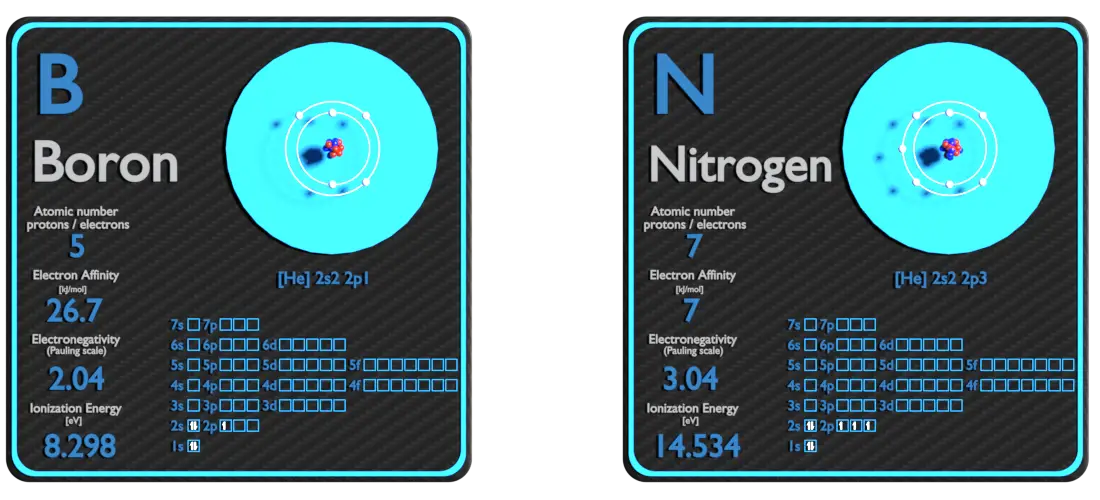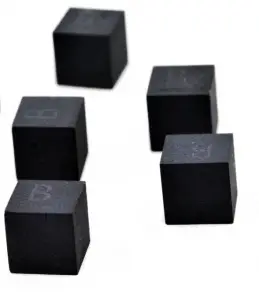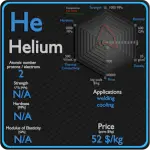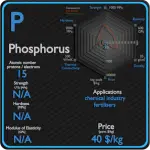This article contains comparison of key thermal and atomic properties of boron and nitrogen, two comparable chemical elements from the periodic table. It also contains basic descriptions and applications of both elements. Boron vs Nitrogen.

Boron and Nitrogen – About Elements


Source: www.luciteria.com
Boron and Nitrogen – Applications
Boron
Nearly all boron ore extracted from the Earth is destined for refinement into boric acid and sodium tetraborate pentahydrate. In the United States, 70% of the boron is used for the production of glass and ceramics. The major global industrial-scale use of boron compounds (about 46% of end-use) is in production of glass fiber for boron-containing insulating and structural fiberglasses, especially in Asia. Boron is added to boron steels at the level of a few parts per million to increase hardenability. Higher percentages are added to steels used in the nuclear industry due to boron’s neutron absorption ability (e.g. pellets of Boron Carbide). Boron can also increase the surface hardness of steels and alloys through boriding. Boron carbide and cubic boron nitride powders are widely used as abrasives.
Nitrogen
Nitrogen in various chemical forms plays a major role in large number of environmental issues. The applications of nitrogen compounds are naturally extremely widely varied due to the huge size of this class: hence, only applications of pure nitrogen itself will be considered here. Two-thirds of nitrogen produced by industry is sold as the gas and the remaining one-third as the liquid. In metallurgy, nitriding is a case hardening process in which the surface nitrogen concentration of a ferrous is increased by diffusion from the surrounding environment to create case-hardened surface. Nitriding produces hard, highly wear-resistant surface (shallow case depths) of product with fair capacity for contact load, good bending fatigue strength and excellent resistance to seizure. Synthetically produced ammonia and nitrates are key industrial fertilisers, and fertiliser nitrates are key pollutants in the eutrophication of water systems. Apart from its use in fertilisers and energy-stores, nitrogen is a constituent of organic compounds as diverse as Kevlar used in high-strength fabric and cyanoacrylate used in superglue.
Boron and Nitrogen – Comparison in Table
| Element | Boron | Nitrogen |
| Density | 2.46 g/cm3 | 0.00125 g/cm3 |
| Ultimate Tensile Strength | N/A | N/A |
| Yield Strength | N/A | N/A |
| Young’s Modulus of Elasticity | N/A | N/A |
| Mohs Scale | 9.5 | N/A |
| Brinell Hardness | N/A | N/A |
| Vickers Hardness | 49000 MPa | N/A |
| Melting Point | 2079 °C | -209.9 °C |
| Boiling Point | 3927 °C | -195.8 °C |
| Thermal Conductivity | 27 W/mK | 0.02598 W/mK |
| Thermal Expansion Coefficient | 5-7 µm/mK | N/A |
| Specific Heat | 1.02 J/g K | 1.04 J/g K |
| Heat of Fusion | 50.2 kJ/mol | (N2) 0.7204 kJ/mol |
| Heat of Vaporization | 508 kJ/mol | (N2) 5.56 kJ/mol |








